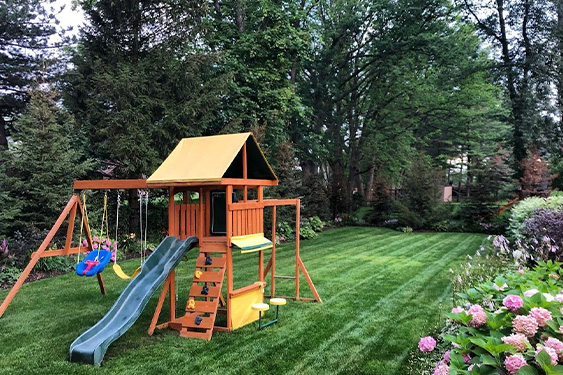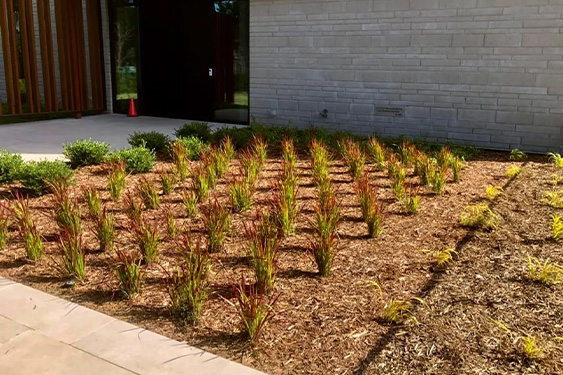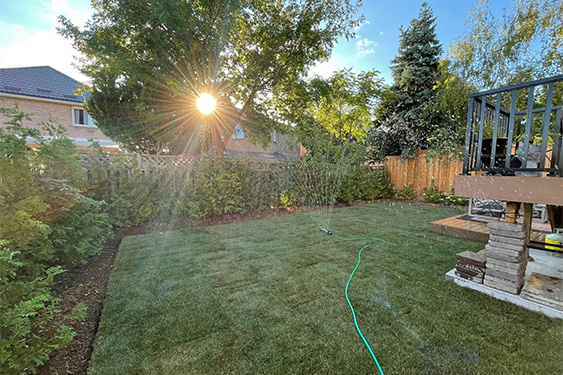From Seed to Sanctuary: Growing a Garden That Supports Your Local Pollinators
If you’ve always dreamed of creating a pollinator garden that’s not only beautiful but also beneficial to the environment, now is the perfect moment to start. It’s well known that pollinators like bees, butterflies, and birds play a crucial role in our ecosystem by facilitating the pollination of plants, which is essential for the production of fruits, vegetables, and flowers. Unfortunately these vital species are facing a significant decline due to habitat loss, pesticide use, and climate change, leading to alarming consequences for biodiversity and food production.
By designing a pollinator-friendly garden, you can make a meaningful contribution to their survival while also enjoying the vibrant colors and life they bring. Consider incorporating a variety of native flowering plants that bloom at different times throughout the growing season to provide a continuous source of nectar and pollen. Creating sheltered areas with shrubs and trees offers habitat for nesting and refuge. This rewarding endeavor not only supports these essential creatures but also enhances your landscape, making it a thriving ecosystem that attracts and retains wildlife. Imagine the joy of seeing butterflies fluttering around and the soft hum of bees busily working—your garden can become a sanctuary for pollinators and a beautiful haven for you to enjoy.
Why Pollinators Matter More Than Ever
Pollinators are the unsung heroes of our ecosystem. Bees, butterflies, birds, and other pollinating creatures are responsible for the reproduction of over 75% of flowering plants. They contribute to a third of the food we consume—think fruits, vegetables, and even coffee! In fact, pollinators are integral to the production of many crops, including apples, almonds, blueberries, and cucumbers. The economic value of pollination services provided by insects is estimated to be around $235 billion to $577 billion annually worldwide.
Yet despite their critical importance, pollinator populations are experiencing dramatic declines. For instance, the honeybee population in the United States and Canada has decreased by nearly 40% since 2006. Monarch butterfly populations have plummeted by 90% over the last two decades, and bumblebee species like the Rusty Patched Bumblebee have seen an 87% decline, leading to its classification as endangered. Birds that are key pollinators, such as hummingbirds, are also facing habitat loss and declining numbers.
The decline of pollinator populations can be attributed to several factors:
- Habitat Loss: Urbanization, agriculture, and deforestation have led to the destruction of natural habitats, reducing the availability of food and nesting sites for pollinators.
- Pesticide Use: Widespread use of pesticides, particularly neonicotinoids, is harmful to pollinators. These chemicals can kill pollinators directly or weaken their immune systems and making them more susceptible to disease.
- Climate Change: Changes in temperature and weather patterns disrupt the timing of plant flowering and pollinator activity, leading to mismatches that affect pollination success.
- Diseases and Parasites: Pollinators are increasingly vulnerable to diseases and parasites, such as the Varroa mite in honeybees, which can devastate entire colonies.
The consequences of losing pollinators are dire. Without them, many plants would fail to reproduce, leading to reductions in plant diversity and the collapse of ecosystems that depend on these plants. This domino effect would impact not only the plants but also the animals that rely on them for food and habitat. The loss of pollinators would also have severe implications for global food security. Crops that depend on pollination could see significant decreases in yield and quality, leading to higher food prices and reduced availability of nutritious foods.
Creating pollinator gardens is a vital step in addressing this crisis. Pollinator gardens provide safe havens where these creatures can find food, shelter, and nesting sites. By planting a variety of native flowers that bloom at different times of the year, you can ensure a continuous food supply for pollinators. Avoiding the use of pesticides and providing water sources can also help create a more hospitable environment.
The Perks of a Pollinator-Friendly Garden
Boosting Local Biodiversity
A pollinator-friendly garden attracts a diverse array of species, creating a more balanced and vibrant ecosystem. By incorporating native plants that provide nectar and pollen, your garden will transform into a lively hub of activity, teeming with life throughout the seasons. This not only enhances the aesthetic appeal of your outdoor space but also significantly boosts local biodiversity, which is crucial for a healthy environment. A thriving population of pollinators supports plant reproduction, contributes to food production, and fosters resilience in the face of environmental changes, making your garden an essential contributor to the overall health of the ecosystem.
Improving Garden Health
Pollinators play a crucial role in helping plants reproduce, which in turn leads to healthier and more prolific gardens. These vital creatures transfer pollen from one flower to another, facilitating the fertilization process. A well-pollinated garden not only yields a greater quantity of fruits, vegetables, and flowers but also enhances the overall biodiversity of the ecosystem. The thriving plants contribute to improved soil quality by increasing organic matter and nutrient retention. They also help reduce pest populations naturally, minimizing the need for chemical interventions.
Increasing Food Production
For those who grow their own produce, pollinators are invaluable allies in the garden. They ensure that crops like tomatoes, cucumbers, and apples not only survive but thrive, leading to a bountiful harvest. Creating a pollinator-friendly garden involves planting a diverse array of flowering plants that bloom at different times throughout the growing season, providing a consistent food source for these important insects. Minimizing pesticide use and providing habitats, such as bee hotels or native plant areas, can significantly increase your harvest. By fostering an environment that attracts and supports pollinators homegrown food becomes not only more rewarding and sustainable, but also contributes to the overall health of the ecosystem. And lets be real, self grown food just tastes so much better!
Designing Your Perfect Pollinator Garden
Choose the Right Plants
Ready to turn your garden into a pollinator garden paradise? Start by picking plants that attract our buzzing and fluttering friends. Native plants are the way to go—they’ve been hanging out with local pollinators for centuries. In Ontario, the bees and butterflies will give you a high-five (or a wing flap) for planting wild bergamot, Canada goldenrod, and cardinal flower. Looking to charm some hummingbirds? Trumpet honeysuckle will have them coming back for seconds. So, get planting and make your garden the hottest pollinator hangout north of the border!
Create Diverse Habitats
Variety is the spice of life, and your garden should be no exception. Mix up your planting game with flowers, shrubs, and trees to keep those pollinators well-fed and comfy all year round. In Ontario you can’t go wrong with serviceberry, red osier dogwood, and eastern redbud—these native plants are like the VIPs of the pollinator world. Layering your plants at different heights will make your garden look like the Ritz-Carlton for bees, butterflies, and more. So get creative and make your backyard the ultimate pollinator hotspot!
Sustainable Gardening Practices
Sustainability goes hand-in-hand with pollinator gardening, creating a harmonious environment that benefits both plants and wildlife. When cultivating a pollinator-friendly garden, it’s crucial to avoid synthetic pesticides and fertilizers, as these chemicals can be detrimental to pollinators like bees, butterflies, and other beneficial insects. Better consider opting for organic solutions that promote healthy growth without harming the ecosystem. And composting is a fantastic way to enrich your soil naturally, providing essential nutrients that support plant health while also reducing waste.
Maintaining Your Pollinator Paradise
Seasonal Management
- Spring: The Big Bloom Kickoff
Spring is like the grand opening of your pollinator paradise. It’s time to roll up your sleeves and get planting! Focus on introducing new flowers and prepping your garden beds. Think of it as setting up the buffet for the year. Don’t forget to tidy up any winter leftovers to give your new plants a fresh start. Your pollinators will be buzzing with excitement! - Summer: The Maintenance Marathon
Summer is all about keeping the party going. Maintain those beautiful blooms by deadheading spent flowers and ensuring your plants stay hydrated. Set up a little “watering hole” for thirsty bees and butterflies. Mow the lawn, but leave some wild patches—pollinators love those untamed areas. Consider it your garden’s version of a spa day. - Fall: The Final Flower Frenzy
As the days get shorter, it’s time to think about the last hurrah for your pollinators. Plant late-blooming flowers like asters and goldenrods to give them the energy boost they need before winter. Rake up the leaves, but leave a few piles as cozy hideaways. It’s like providing a warm blanket for your garden guests. - Winter: The Clean-Up Crew
Winter may seem quiet, but it’s your planning season. Clean up dead plants, but leave some standing stems for nesting sites. Think of it as tidying up after a big bash. Dream up new ideas for next year’s garden, and maybe even start a few seeds indoors. Your pollinators will appreciate the effort when spring rolls around again.
Water and Shelter: A Pollinator’s Dream Resort
Creating a buzzing and fluttering paradise in your garden isn’t just about the flowers—it’s also about the amenities! Pollinators need water and shelter to thrive, so think of your garden as a five-star resort for bees, butterflies, and your other winged guests.
- Water, Water Everywhere
Pollinators get thirsty too! Provide shallow water sources like birdbaths or small ponds. For a little extra flair, add some stones to shallow dishes to give them safe landing spots. Imagine bees lounging by the pool, sipping on fresh droplets. Keep those water stations filled, especially during hot, dry spells. Your garden will become the go-to hydration station for all the local buzz. - Shelter: The Ultimate Staycation
After a long day of pollinating, your tiny guests need a place to rest their wings. Ensure there are plenty of cozy nooks by planting trees, shrubs, and even installing designated pollinator hotels. Think of these as luxury suites for your hardworking friends. A mix of dense foliage and open spaces will cater to different species, giving them options to nest and hide from predators. It’s like offering a full range of accommodations, from penthouses to snug little cottages. - The Perfect Balance
Water and shelter go hand-in-hand in creating a thriving pollinator habitat. Think of your garden as a well-rounded retreat where every need is met. The more diverse your offerings, the more species you’ll attract. Keep the atmosphere buzzing with excitement and watch as your garden turns into the hottest spot in town for pollinators.
Organic Pest Control
Managing pests without chemicals is crucial for maintaining a healthy ecosystem and protecting beneficial organisms in your garden. One effective method is to introduce beneficial insects, such as ladybugs and lacewings, which are natural predators of common pests like aphids and mites. Imagine ladybugs as your garden’s tiny, armored knights, patrolling the leaves and devouring any aphids daring to invade. Lacewings are equally voracious and will help keep mite populations in check. These friendly insects can significantly reduce pest populations without harming your plants, creating a harmonious balance in your garden.
In addition to enlisting an insect army, consider using natural deterrents such as neem oil and insecticidal soap. Neem oil, derived from the neem tree, disrupts the life cycle of pests, effectively acting as Mother Nature’s own pest control. Insecticidal soap on the other hand works by suffocating soft-bodied insects like aphids and whiteflies, ensuring they won’t be bothering your plants any longer. Both options are environmentally friendly and safe for use around pets and children, making them ideal choices for a family garden.
To further enhance your pest management strategy, it’s essential to regularly inspect your plants for signs of infestation. Look for discolored leaves, webbing, or any visible pests. Think of it as conducting a wellness check-up for your plants. When you spot pests, remove them by hand whenever possible. This hands-on approach can be surprisingly effective for controlling small pest populations without resorting to chemicals. It might even become a meditative part of your gardening routine.
Attracting Specific Pollinators: Tailoring Your Garden for Winged Visitors
While creating a pollinator paradise, it’s essential to cater to the unique preferences of different pollinators. Let’s have a brief look into some specific ways to attract bees, butterflies, hummingbirds, and other common pollinators to your garden. This will be a brief overview, as we intend to publish a detailed article in the future that explores the various pollinators and how to attract them.
- Bees: The Industrious Guests
Bees are the workhorses of the pollinator world, and they love flowers rich in nectar and pollen. Plant a variety of blooms such as lavender, sunflowers, and daisies. Bees are also fond of herbs like thyme and rosemary. They appreciate a mix of colors and shapes, so variety is key. Set up a “Bee BnB” with bee houses or leave some bare ground for ground-nesting bees. Your garden will soon be buzzing with their diligent activity. - Butterflies: The Graceful Visitors
Butterflies add a touch of grace and beauty to any garden. To attract them, plant bright, fragrant flowers like milkweed, lantana, and butterfly bush. Butterflies are especially drawn to red, yellow, and purple hues. Don’t forget to include some host plants like parsley and fennel for their caterpillars to munch on. Create a sunny, sheltered spot free from strong winds and watch them flutter in delight! - Hummingbirds: The Energetic Flyers
These tiny vibrant birds are always on the move and need high-energy nectar to keep them going. Plant tubular flowers like trumpet vine, salvia, and honeysuckle to lure them in. Hummingbirds are particularly attracted to bright red and orange blooms. Adding a few well-placed feeders with homemade sugar water (no red dye please!) can also help attract these energetic visitors. Provide perches for them to rest and enjoy their aerial acrobatics. - Other Common Pollinators: The Unsung Heroes
Don’t forget the other important pollinators like moths, beetles and even bats. Moths are night owls and are attracted to white or pale-colored flowers that bloom in the evening, such as evening primrose. Beetles enjoy flowers with strong scents and multiple stamens, like magnolias and goldenrod. If you’re in a bat-friendly region, plant night-blooming flowers like moonflower and add a bat house to provide a cozy roosting spot.
Our Oakly Landscaping Conclusion
Every garden, no matter its size, can make a difference in supporting pollinators. By creating a pollinator-friendly garden, you’re contributing to a healthier environment and enjoying the myriad benefits these creatures bring.
Are you ready to start your pollinator garden today? Join the movement and transform your space into a haven for pollinators! For more tips and personalized services, connect with our expert landscapers. We would be delighted to create your dream garden and sanctuary for pollinators.
Additionally, if you’re looking for professional assistance in designing and maintaining your garden, check out our commercial landscaping services and our residential landscaping services in Ontario, Canada!
Further Resources
Curious to learn more about pollinators? Here are some external links that may pique your interest and provide you with deeper insights!



